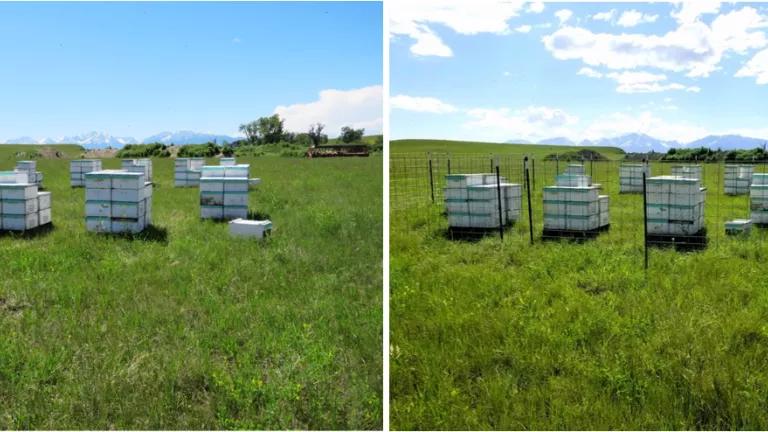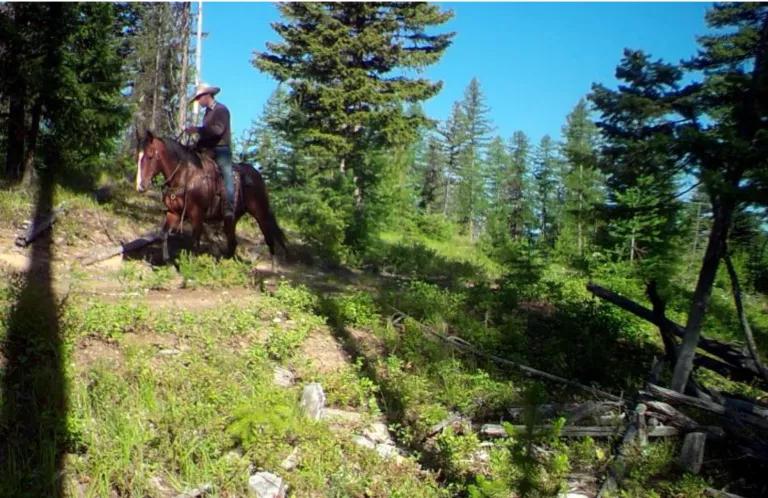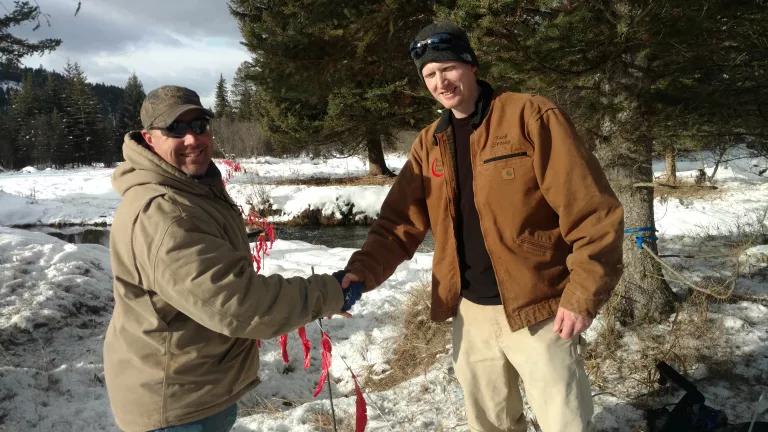
Congress and the President approved a spending package last week to keep the government running through the rest of the 2020 fiscal year. Contained within the legislation is a provision that NRDC and Defenders of Wildlife worked to secure: an appropriation of $1.38 million for the federal agency Wildlife Services to hire new employees dedicated to using nonlethal measures to reduce livestock-carnivore conflicts in up to 12 states.
The new employees will be modeled after three “wildlife conflict-prevention specialist” positions we’ve already worked with Wildlife Services to create—two in Montana and one in Oregon. In Montana, one of the specialists is a year-round fencing technician who works with landowners to install electric fencing around livestock pastures, bee yards, chicken coops, and other “attractants” across western and central Montana. The other is a seasonal “range rider” who has spent the last two summers protecting several herds of cattle on grazing allotments in wolf and grizzly bear country in the state’s northwestern corner.
The third specialist works in seven different counties in southwestern Oregon, using fencing, scare devices, her own human presence, and other deterrents to reduce conflicts with wolves, black bears, mountain lions, coyotes, and other wildlife.
So far, the positions have proven extremely effective. Over the last two years, the Montana fencing technician has installed 67 electric fencing enclosures, and there has not been a single livestock depredation or instance of property damage within any of them. Further, there was not a single confirmed livestock depredation among the cattle monitored by the range rider this past summer despite a history of chronic losses in previous years. And within the first few weeks of starting her job this fall, the conflict-prevention specialist in Oregon had successfully used a variety of nonlethal strategies to prevent wolves from attacking cattle.
Because of the effectiveness of these positions and the strategies they employ, over the last year NRDC and Defenders of Wildlife advocated for federal funding to create similar positions in additional states (including Washington, California, Idaho, Wyoming, Colorado, Arizona, New Mexico, Minnesota, Wisconsin, and Michigan). After months of uncertainty, we were thrilled when, late last week, the spending bills containing our requested appropriation were signed into law.
As the new year begins, we look forward to working with Wildlife Services to establish new conflict-prevention positions in states across the country, while continuing the successful work that the specialists in Montana and Oregon are already doing. We’re also excited to continue to collaborate with our growing number of partners in these efforts, including dozens of participating ranchers and landowners, other state and federal agencies (such as Montana Fish, Wildlife & Parks, the Montana Livestock Loss Board, and the U.S. Fish and Wildlife Service) and conservation groups (such as Vital Ground and Sierra Club). We greatly appreciate their involvement and support.

NRDC, Defenders of Wildlife, and Wildlife Services all recognize that our partnership is an unlikely one—something we discussed in a jointly-authored article earlier this year. NRDC has long opposed the use of certain lethal devices used by the agency, like M-44s. We also have grave concerns with the sheer number of native carnivores and other wild animals killed by Wildlife Services across the country every year, including hundreds of wolves, black bears, and mountain lions, and tens of thousands of coyotes and beavers.
But working together despite those disagreements is part of what makes our collaboration so compelling. Even with serious differences, we have found a way to join forces to provide meaningful, durable solutions for the landowners and rural communities most impacted by predators—while keeping carnivores out of trouble and alive on the landscape to fulfill their critical ecological roles. And perhaps as importantly, by cooperating in the face of our differences, we are also proving that even in such politically divisive times, it is still possible to find and work toward common goals—for the benefit of people, wildlife, and the country.
